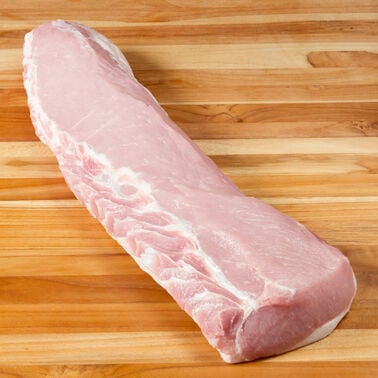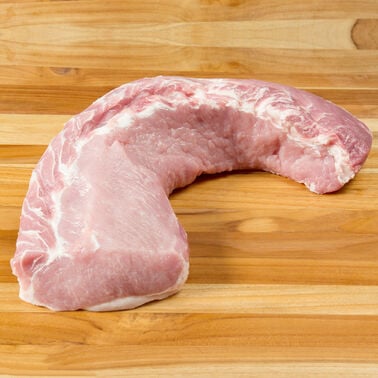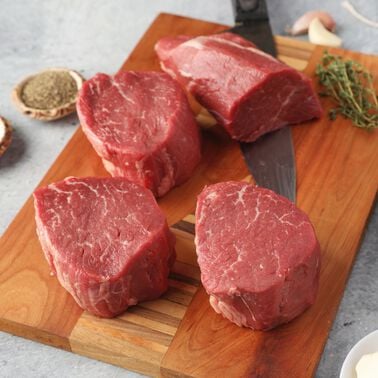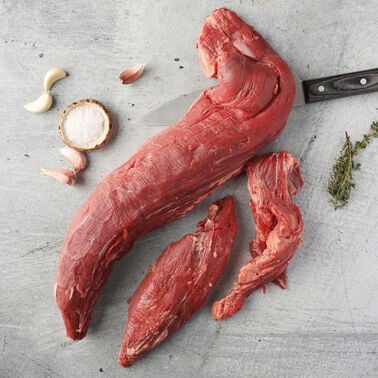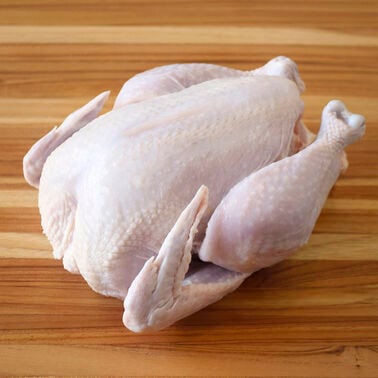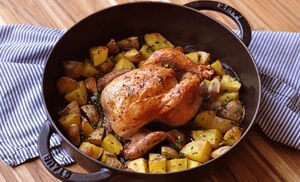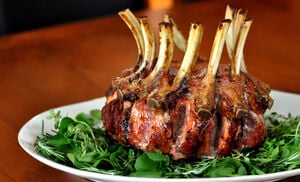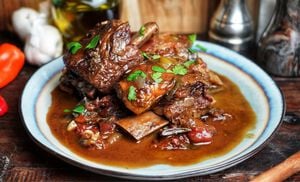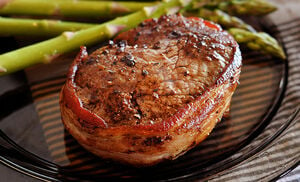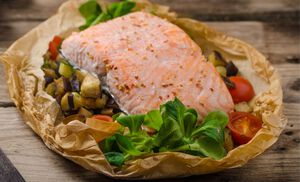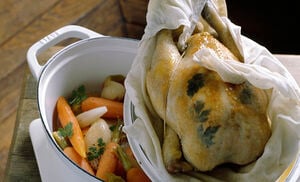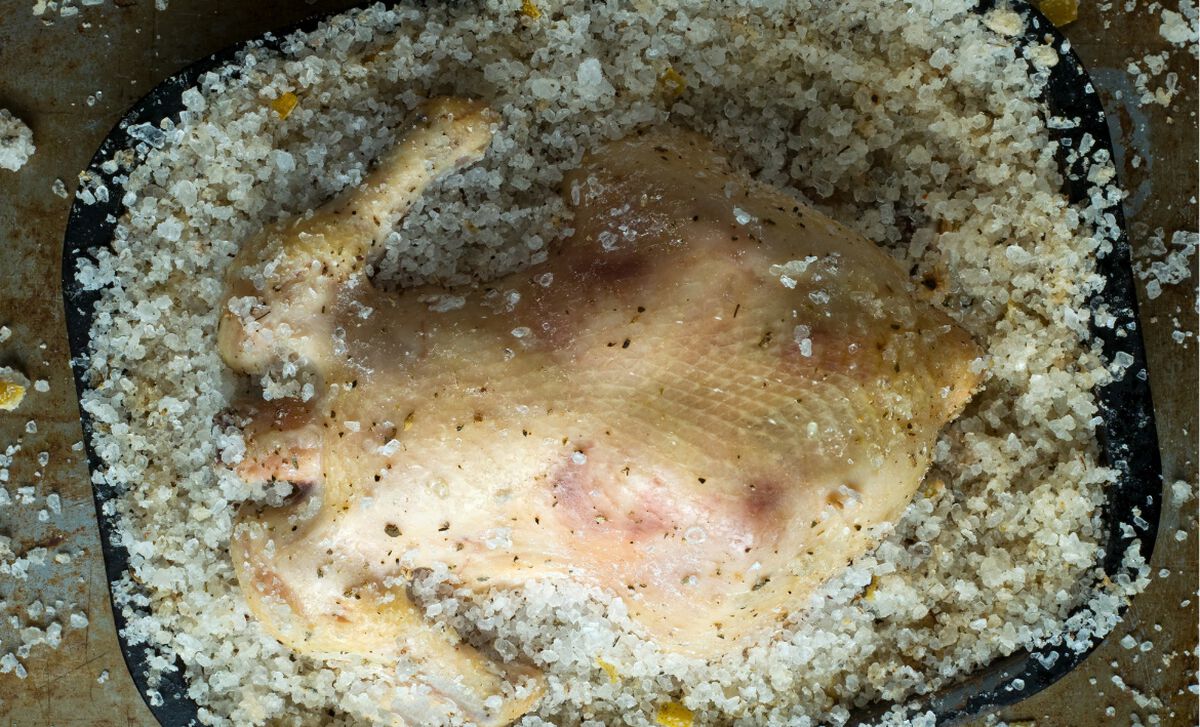
Salt roasting is achieved by surrounding a piece of meat with a thick layer of salt and baking it. As the salt encrusted meat bakes, the salt forms a tight seal around the meat. All of the flavor and juices get trapped in the salt shell to create a cooking environment that is part roasting and part steaming. This technique works well with a variety of meats, especially larger cuts, like pork loin, beef tenderloin, or whole chickens. You can also try it with whole fish and even vegetables, like potatoes.
To try this technique at home, start by preheating the oven to 400 degrees F. Place about 3 cups of kosher salt in a bowl and add enough water to make the mixture look like wet sand; start with about 1/4 cup of water. The salt should be moist enough to compact nicely. Place some of the dampened salt on the bottom of a sheet pan or roasting pan and pat it down to make a nice bed for the meat. Set the meat on top of the salt. To amp up the flavor, place some herb sprigs on top of the meat; try thyme, tarragon, rosemary or sage. Pour the remaining dampened salt on top of the meat. Using your hands, pat the salt around the meat to form a thick crust. Make sure there are no holes. The salt igloo is ready to roast.
It might seem like a lot of salt (and it is!), but because salt is so inexpensive, it only adds a couple dollars to the meal. And don’t worry, all that salt surprisingly does not make the meat overly salty.
The cook time for your salt roast will depend on the type of meat used. Pork loin will take about 45 minutes, beef tenderloin about 30 minutes, and count on about an hour and a half for a whole chicken. The best way to tell if the meat is done is to carefully poke a small hole through the salt with an instant read thermometer. Insert the thermometer into the thickest part of the meat. For pork, it should read 140 degrees F, if you like a little pink, or 155 degrees F if not. For beef, you are looking for 130 degrees F for medium rare and 140 degrees F for medium. Chicken and other poultry should read 160 degrees F. After removing the roast from the oven, it is important to let it rest for 15 minutes before removing the crust and slicing the meat. The roast will continue to cook while it is resting and the juices will redistribute. After the meat has rested, crack the outer salt shell with a spoon. Carefully remove the shell in large pieces. Brush away any excess salt from the meat with a dry pastry brush. Transfer the meat to a cutting board and slice. The meat will be tender, juicy and intensely flavorful, picking up the flavor of the herbs it was roasted with.
